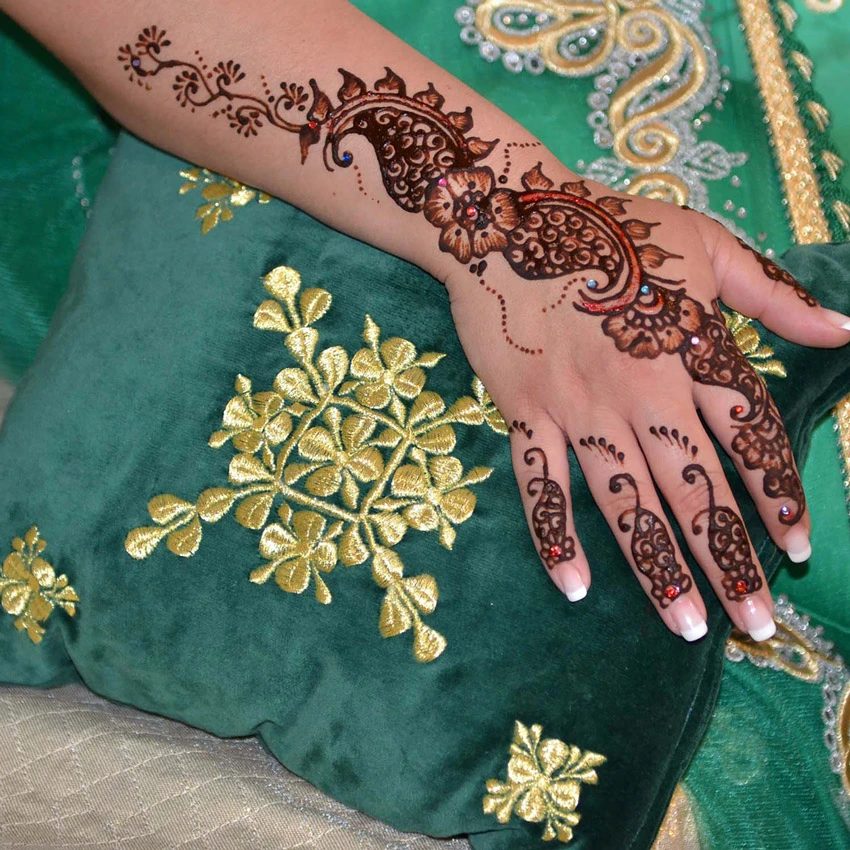+212 664 245 833
Newsletter
STAY TUNED BY SUBSCRIBING

Henna is a plant that grows in the Zagora region
of Southern Morocco. It is ground into a fine powder and mixed with warm water
or tea, resulting in a darker color whereby the henna becomes a thick, green
paste. The paste is then either used on the open lattice parts of preset sticker
designs, done freehand, or placed in a syringe for application. Henna paste
needs time to dry before the paste begins to fall apart, leaving a beautiful
design on the body. Henna is also a type of natural moisturizer for the feet as
it prevents cracking in extremely dry weather. It is also used for coloring
hair and nails.
Henna Traditions in Morocco
The Henna tattoo is an arrangement of geometric, block, or ornate designs that are applied to the hands and feet. In Morocco Henna has a deeper significance since it is traditionally associated with ceremonies such as births, weddings, and religious celebrations. Moroccan women also use henna to decorate themselves during leisure time when they gather for afternoon tea and pastries.
Henna's Symbolism for Moroccans
Henna is generally considered a tattoo art for travelers. However, it is also a sign of good luck, happiness, and prosperity by locals. There are people, who still strongly believe that Henna protects one from the evil eye and prevents disease. This is particularly true when the design has either an eye or Khamissa "the hand of Fatima" included on it.
Henna plays a vital role in Moroccan Ceremonies
Weddings
Moroccan weddings are traditionally in two parts and last several days. The first day is reserved for close relatives to ordain themselves with Henna. The second day is when families, friends, and neighbors attend the Henna ceremony. During this time women bond and share the joy with the bride. The bride has designs place on her hands and feet which signify her marriage. Single women who attend the wedding have light Henna designs painted on their hands only since unmarried in Morocco do not paint their feet with henna.
Religious Ceremonies
Henna is also sent to bring “luck” to those who ordain themselves with it. Many Moroccans choose to have Henna for religious holidays such as Ashoura, Aid Al Adha "the sacrifice of the sheep," circumcisions, and other ceremonial holidays.
The Art of Henna serves as a time of celebratory bonding for Moroccan women as they share designs, conversation, and affection.